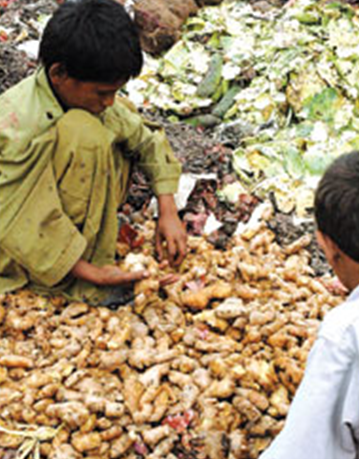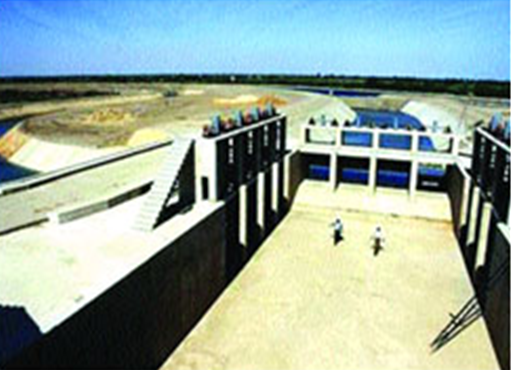Karachi: civic issues
This is a collection of articles archived for the excellence of their content. Readers will be able to edit existing articles and post new articles directly |
Karachi: Best city for expats
Best city for expats? Karachi tops list
June 2010
London: Angola’s capital Luanda topped this year’s Mercer Worldwide Cost of Living Survey as the world’s most expensive city for expatriates, with Tokyo in second spot and Ndjamena, Chad, in third.
Karachi in Pakistan was the least costly place for expats in a survey by the c o n s u l t i n g firm that covers 214 cities across five continents and measures the comparative costs of more than 200 items in each location.
For the first time, three African cities — Luanda, Ndjamena and Libreville in Gabon (7) — were among the 10 most expensive cities. Three Asian cities — Tokyo, Osaka (6) and Hong Kong (8) — were in the top 10, along with the European centers Moscow (4), Geneva (5) and Copenhagen (10). “Our cities are selected based on requests from our multinational clients,” Mercer senior researcher Nathalie Constantin-Metral said in a statement. The other most expensive cities in Europe were Oslo (11), Milan (15), London and Paris (both 17). The least expensive city in Europe was Tirana (200) in Albania. In the US, New York (27) was the most expensive, followed by Los Angeles (55). Washington, DC, ranked 111 and the least expensive US city was Winston Salem (197). REUTERS
Karachi: Market in a mess
By Aamir Shafaat Khan
One needs nerves of steel to enter one of Asia’s biggest vegetable markets, especially when it is raining cats and dogs. One can cover one’s feet by wearing long boots but one’s tolerance level should be enough to bear the pungent smell emanating from the garbage and filth lying on the so-called roads which one has to pass through while visiting the market.
This is not a single day, post-rain scenario caused by heavy downpour. The 100-acre New Sabzi Mandi (vegetable market) on Super Highway has been facing this problem from the time it was set up five years ago. And the authorities appear to be least bothered about the situation.
Whenever rains hit the city, consumers as well as vegetable dealers put on their long boots in order to wade through dirty passages. The respiratory and nervous systems of fruit and vegetable dealers might have got used to such situations. They don’t seem to understand the health hazards that are involved here. But it is really hard for vegetable consumers to undergo such an experience.
Trucks and vans that come from up-country take risky turns before reaching their destination within the market because of dangerous potholes and puddles on the so-called road network. The situation has become more dangerous after the recent heavy rainfall.
The Market Committee Karachi must have collected between Rs150 and Rs200 million in the last five years in the form of market fees and vehicle entry charges, besides pocketing Rs180-200 million as conservancy charges. But it seems that the big amount has been siphoned off by a group that has vested interests in the affairs of the market.
The market lacks a proper road network. Out of the 160 toilets planned for the area very few exist; and the ones that exist are in a pitiable condition forcing people to use roads and other places to relieve themselves. Encroachers are also active here. There is no proper sewerage and drainage system and the market does not have a natural gas facility. There is not even a proper facility for clean drinking water.
A vegetable dealer, Haji Shahjehan, attributes the sorry state of affairs to the lack of interest taken by the Market Committee since its inception. Many dealers, who had paid decent amounts to get allotment 13 years back, are yet to take possession. Several changes are being made in the map of the market and the committee people have rented out many places.
The solution to all these problems lies in setting up a market committee complying with the Agriculture Act 1939-1940 comprising 17 members (nine growers, six fruit and vegetable dealers and two representatives of the consumers’ body) to run daily affairs of the market. The chairman of the committee should be appointed from the above-mentioned 17 members.
In cities like Quetta, Lahore, Nawabshah, and Sukkur market committees act following the Agriculture Act. “I do not know as to where the huge money collected from the vehicles’ entry point and conservancy charges are being spent as there has been no infrastructure development undertaken in the vegetable market,” Haji Shahjehan says.
As many as 1,000 trucks loaded with vegetables and fruit, worth Rs90 to Rs10 million, make their entry into the Sabzi Mandi gate daily from up-country. All the stuff is not meant for the consumption of Karachi’s 160 million people. Traders divide the daily huge arrivals for export purposes, leaving the rest for the mega city.
Haji Shahjehan claims that between 25,000 and 30,000 people are employed directly in the 3,000 shops which are functional out of the total 5,000 shops. More than 10,000 labourers and workers are engaged in the handling of vegetables and fruit. The majority of workers belong to Dir Maidani, Bajore and Kashmir.
Whenever an economic activity gets underway it leads to the opening of parallel activities and the Sabzi Mandi is no exception. Many people, including women and children, earn their livelihood by lifting fruit and vegetables which fall off during their loading and unloading from vehicles. They pile up stocks in bags and re-sale them in parallel small outlets within the market.
It’s time the authorities concerned looked into the matter and made the vegetable market a place worth visiting.
Karachi: water supply
The water story
By Shaikh Aziz
THE story of water supply to Karachi is an old one. In the days before the English took over (in 1843) the main source of water for the city’s denizens was a few wells dug in the Liyari riverbed or along its banks. Some water tanks at Ram Bagh and Rattan Talau also stored rainwater which was picked up by the bihshtees (water-takers) in their mashkeezas and given to residents and shopkeepers for some nominal charges.
When the English finally shifted the capital of Sindh from Hyderabad, they needed water for their army, civil administrators and the people. In 1845 a survey was conducted to search for some dependable resources. There were many plans, such as tapping underground resources in the Malir, Hub and Indus rivers. The task was undertaken by an engineer, Chapman, who later got drowned in the Indus. The other scheme to draw water from the Hub River was assigned to T. G. Newnham, but that was shelved on suspicion the water there was saline.
Subsequently, the Malir River bed was spotted which had accumulated floodwater in a large quantity. The scheme was visualised by Col C. J. Marriman, who thought that the riverbed contained enough underground water that could be drawn by digging wells. The scheme was later handed over to James Strachan, the civil engineer and secretary of the Karachi Municipal Committee (after whom a road has also been named).
His initial plans were not accepted owing to inordinate expense estimates. He altered it and estimated that eight gallons of water per head would cost Rs850,000, which was finally accepted. Sir Richard Temple launched the scheme on Feb 18, 1880. The reservoir was later called the Temple Reservoir. In April 1883, the scheme was commissioned by H. M. Birdwood, the judicial commissioner of Karachi, at the time.
Under the project two wells measuring 38ft deep and 40ft in diameter were dug out, of which water was pumped out to a reservoir 6,551ft away. The reservoir was 150ft wide and 200ft long having a depth of 10ft. It entailed a cost of Rs854,973. The water was then stored and flowed through a nine-mile long masonry conduit of 2’3”x3’3” dimension with a declining height of two feet per mile making the flow swifter. It was estimated that since the city was a little above sea level, the water would reach higher elevation as well. Later another Rs315,292 were spent to extend water pipes and the distribution system to enable the bihishtees to fill their mashkeezas.
In April 1890, the chief officer of municipality, J. Frost Brunton, directed digging of another well at 4th mile which was done for Rs5,523. In 1901, as the demand increased another well at Dumlotte was dug at a cost of Rs4,358. The same year another well of 35ft was dug providing 2,400 gallons per day. In 1895-96, a larger reservoir was built with an expenditure of Rs120,000.
In 1904, the whole project was reviewed. It was noted that all three resources provided 4,266,000 gallons of water on a daily basis. Out of this water 78,700 gallons were allocated for the army, 70,000 gallons for the railways and 3238,000 gallons was reserved for domestic purposes, which meant 26 gallons per head.
In 1906, the need for more water arose forcing the municipality to ration the water for all major consumers. The army, the railways and the businessmen who needed water connection of more than half-an-inch were given meters and were charged nine rupees per 1,000 gallons. For domestic use people demanding connections of half-an-inch were charged one-and-a-half rupee per month, for three-quarters of an inch three rupees, and for one inch six rupees. Houses with lawns were charged two per cent of the monthly rental value.
As the demand grew further, various administrations continued to search for more resources and finally Kinjhar and Haleji lakes were found to be the source that could provide water to the region. In 1930, the British Army needed more water so it looked for Haleji Lake. Finally, a proper water supply canal was dug to bring water from these lakes. Ultimately, when the Kotri Barrage was commissioned in 1955 a canal Kalri-Baghar Feeder was taken out from the Indus River to ensure continued water supply to Kinjhar Lake, and finally to Karachi which was expanding at a rapid pace.
Today Karachi’s water demand of 550 million gallons per day (MGD), 450 MGD is being met by the Indus via Kinjhar, and the rest from Malir and Hubb dams.



